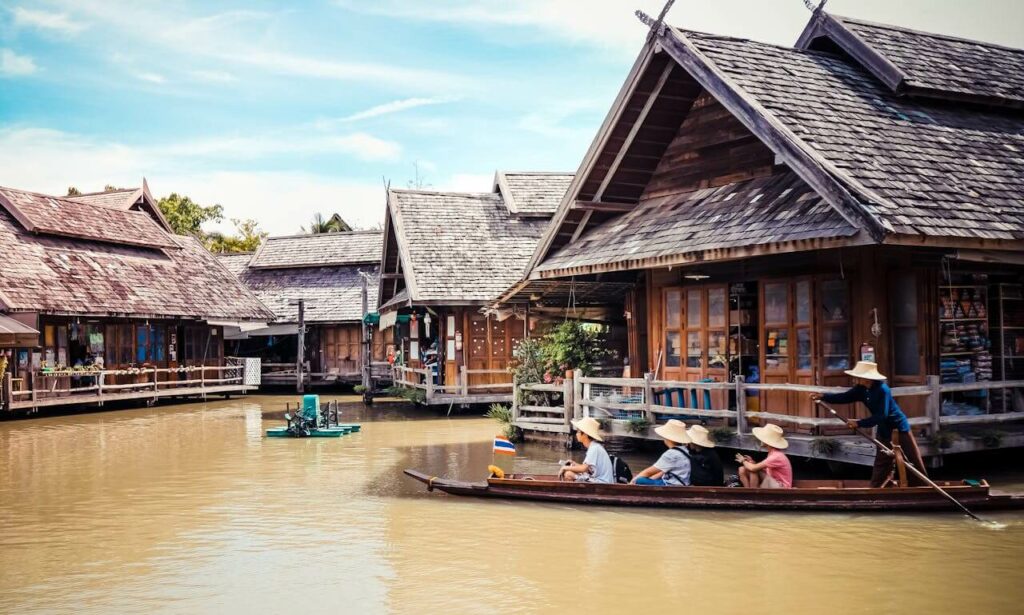
Thailand Community-Based Tourism: Empower Villages & Culture
Tired of crowded beaches and cookie-cutter tours in Thailand? 😩 Thailand community-based tourism flips the script—imagine traveling where locals call the shots, your cash funds schools, forests, and mangrove conservation projects in villages like Bang Rong, and you’re sipping homemade coconut coffee with a family instead of snapping pics at a resort. This isn’t just a trip; it’s a front-row seat to an example of ecotourism that lets you live the culture—whether weaving with Isaan artisans in Nong San or hiking to waterfalls in Mae Kampong. Ready to dive deeper and discover how this empowering local villagers movement could redefine your next adventure? 🌿
Article Takeaways
The essential takeaway: 🌿 Thailand’s Community-Based Tourism (CBT) puts locals in charge, offering authentic experiences that boost village economies while preserving culture and nature. Unlike mass tourism, 100% of your spending directly supports families, with the sector valued at $29.6B in 2023 and projected to hit $140.3B by 2034. It’s travel that transforms tourists into friends—and funds a sustainable future. 🏞️
- So, what’s the deal with community tourism in Thailand?
- Why should you care? the awesome benefits for everyone
- What kind of experiences can you actually do?
- Where to find these epic community tourism spots?
- How to be a great guest: your guide to responsible travel
- Ready to book? Here’s how to get started
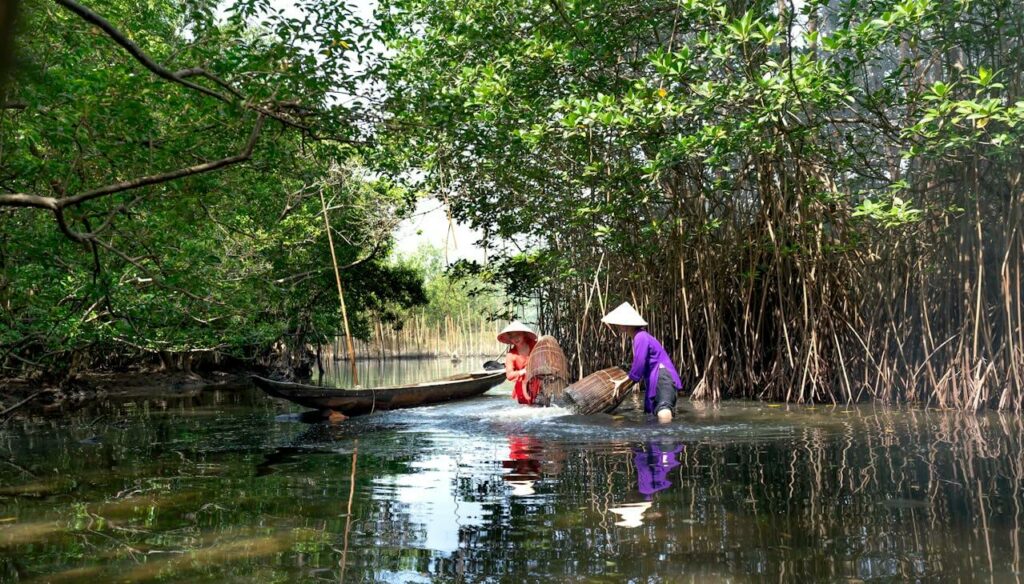
So, what’s the deal with Thailand community-based tourism?
Alright, let’s talk about a different way to experience Thailand 🤝. Tired of the usual tourist trails and crowded beaches? Meet community-based tourism (CBT) – a game-changer where locals design and manage their own tourism experiences. Think of it as « by the people, for the people » 🌿. Post-pandemic, more travelers crave meaningful connections, and CBT delivers exactly that.
Born in the 1990s, CBT focuses on empowering local villagers to take control. Unlike mass tourism, where profits often vanish into big corporations, here, every baht stays in the community. Imagine sharing a meal with a local family, learning traditional crafts, or hiking through rice fields guided by someone who’s lived there their whole life – that’s the impact positif direct of CBT. This approach doesn’t just boost economies; it protects natural resources. For example, Phuket’s Bang Rong community invites tourists to join mangrove replanting projects, blending travel with environmental action.
And guess what? The CBT market isn’t just a niche – it’s booming! Valued at $29.6 billion in 2023, it’s expected to hit $140.3 billion by 2034. Community-base tourism in Thailand is then a growing market with a 15.3% annual growth rate. Why? Travelers crave authentic cultural exchanges and eco-friendly adventures, from cooking classes in Chiang Mai to mangrove conservation in Phuket. This surge isn’t accidental. Sustainability trends and digital platforms now let rural communities connect directly with global tourists – making it easier than ever to book unique stays.
But don’t think CBT is just « village tourism » 🏡. It’s way more diverse! You could sip organic tea in Mae Kampong village near Chiang Mai, where travelers sleep in wooden homes and learn ancient tea-making techniques. Or kayak through hidden islands on Koh Yao Noi, where families open their homes to share fishing traditions and island life. Even urban areas join in – Bangkok’s green spaces offer food tours and eco-discoveries. The key? Communities lead, tourists connect, and traditions thrive. Ready to dive deeper? Let’s explore how this works in practice 👇.
Why should you care? the awesome benefits for everyone
For the local communities: it’s a real game-changer
Alright, let’s talk numbers. In Thailand, over 56 ethnic groups call this country home, each with unique traditions. But how do they thrive? Community-based tourism (CBT) flips the script by letting locals design their own tourism experiences. Imagine a village where your stay directly funds schools and clinics – that’s the magic of direct economic development. No middlemen, just pure support for daily needs.
Think of it as a cultural revival. When travelers learn traditional crafts or share meals with families, communities rediscover pride in their heritage. Take Ban Talae Nok, a Muslim village in Phang Nga, where mangrove conservation and Moken culture aren’t just preserved – they’re celebrated. This isn’t just tourism; it’s a unique cultural heritage lifeline for generations.
- Economic empowerment: Direct income that stays within the village.
- Cultural preservation: Keeps traditions, crafts, and local knowledge alive.
- Environmental conservation: Creates an incentive to protect ecosystems like mangroves.
- Community strengthening: Fosters local pride and collaborative decision-making.
For you, the traveler: get ready for a real adventure 🤩
Ever cooked Thai curry with a local grandma? How about waking up to roosters and helping harvest rice? CBT turns you from a spectator into a co-star. No generic tours here – deep cultural immersion awaits. At Koh Yao Noi, you’ll swap crowded resorts for family-run homestays and learn why coconut sugar production is more than just a sweet treat.
Here’s the kicker: these aren’t staged performances. When Karen villagers invite you to weave baskets or Akha guides teach forest survival skills, you’re building meaningful human connections that outlast your trip. And guess what? That $50 homestay fee? It’s rebuilding community centers and funding scholarships for kids. Talk about off-the-beaten-path impact!
- Authentic experiences: Go way beyond the typical tourist itinerary.
- Meaningful connections: Share moments with locals and learn directly from them.
- Positive impact: Know your money supports conservation and families.
- Unique discoveries: Explore hidden gems you won’t find in guidebooks.
Curious about the science? A Frontiers in Psychology study confirms this model promotes empowerment through local ownership.
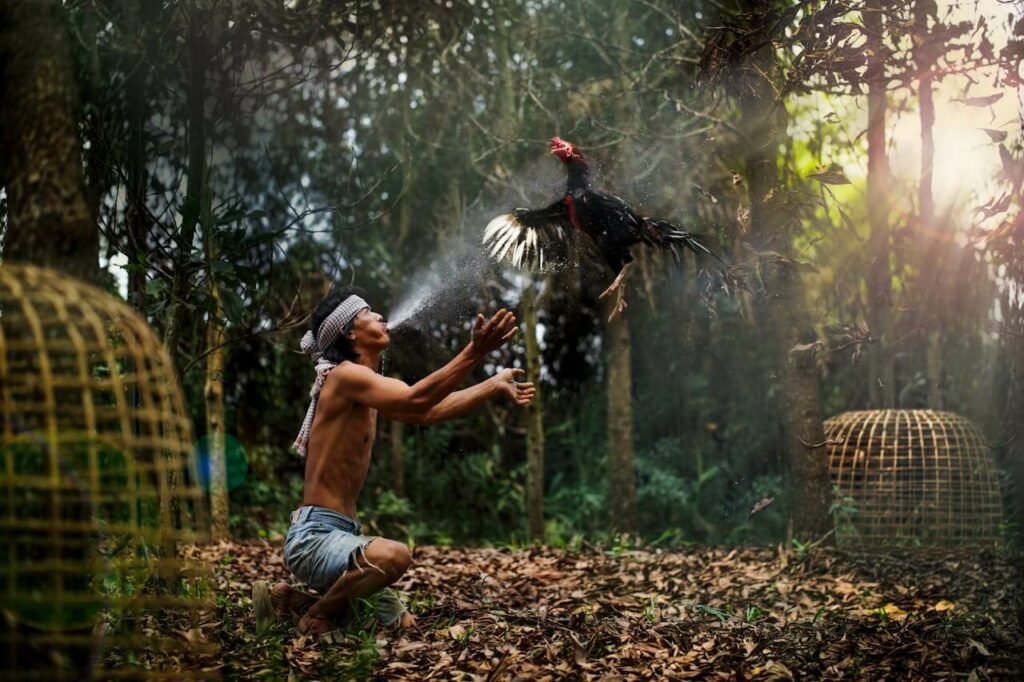
What kind of experiences can you actually do?
From homestays to hands-on workshops
Alright, let’s cut to the chase: homestays in Thailand’s CBT aren’t just “where to sleep.” They’re full immersion. In Baan Rim Klong, you’ll harvest palm sugar at dawn, prep cours de cuisine traditionnelle like Khanom Tom (coconut dumplings), and swap stories with your host family under mosquito nets. No filters needed—just raw, unscripted moments.
Ready to craft like a local? Nong San’s teinture à l’indigo isn’t just pretty patterns—it’s survival. You’ll crush leaves, stir natural dyes, and stamp cloth while hearing how this craft revived 40 families’ livelihoods. Or try bamboo weaving in Mae Kampong: turn stalks into baskets or mats. Pro tip: Your woven creations aren’t souvenirs—they’re tiny pieces of living heritage.
A taste of authentic thai life
Adventure with purpose? 🛥️ In Baan Talae Nok, kayak through mangroves and plant saplings to fight coastal erosion. Later, hunt crabs at sunset with fisherfolk, then grill your catch on coconut husks. No photo ops—just real impact.
CBT’s magic? Diversity. Samut Songkram’s agritourisme lets you tap palm trees for syrup, pour it over Khanom Tan (palm sugar cake), and sip tea brewed from the same leaves. For écotourisme, Chulabhorn Pattana 9 (Yala) offers rare hornbill sightings and reforestation talks. And cultural tourism? Think Akha villages where elders teach turmeric-dyed fabrics symbolizing mountain spirits.
Why care? 💰 Every baht funds schools, clinics, and forest guardians. Nong San’s indigo revival? It saved a 200-year-old craft. Baan Rai Krang’s palm sugar profits? Now power solar irrigation. This isn’t travel—it’s ethical spending. 🌏
Pro tip: Be mindful. Silence your phone during siestas, ask before snapping photos, and ditch single-use plastics. These villages thrive on respect, not just cash. Ready to swap resorts for realness? Your next adventure’s a homestay away. 🏡
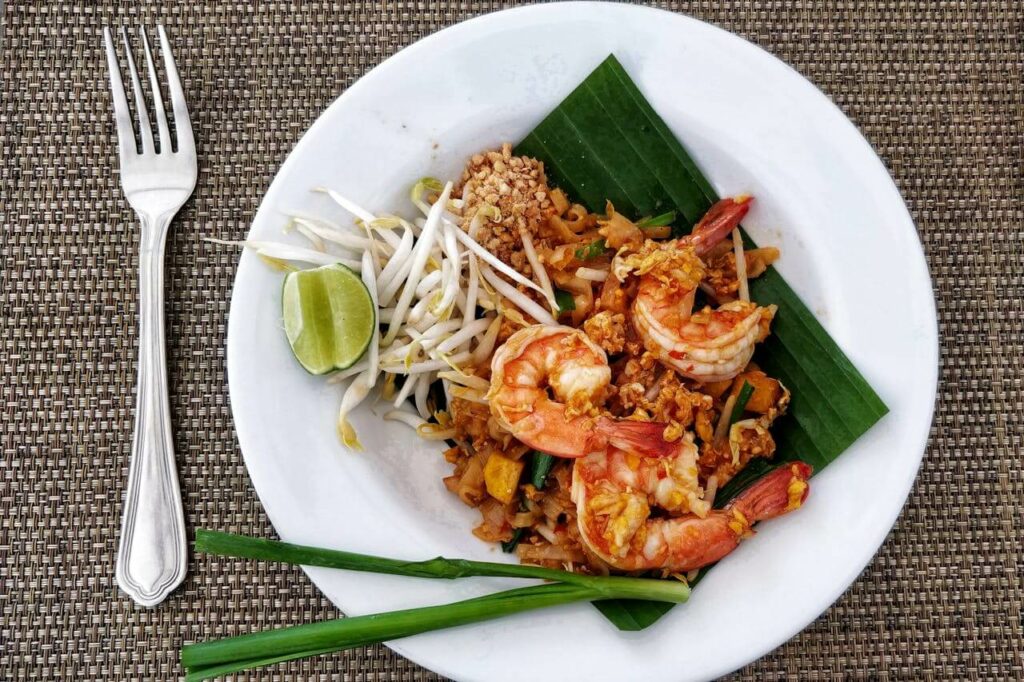
Where to find these epic community tourism spots?
Northern Thailand: The Heart of CBT
Chiang Mai is considered the ‘CBT capital’ 🌄, with dozens of villages creating their own tourism magic. Picture misty mountains, hill tribes, and Lanna culture – that’s Northern Thailand for you. Mae Kampong, a nationally recognized model community [1], nails eco-living with waterfalls, fermented coffee workshops, and cozy homestays. Want deeper jungle vibes? Trek with Karen, Black Lahu, or Shan communities in Mae Hong Son, or check out Akha culture in Chiang Rai – think traditional house stays and indigo-dyed textiles.
Southern and Central Gems: Beyond the Beaches
Think Thailand’s only beaches and parties? Think again! 🌿 Bang Rong in Phuket flips the script with mangrove kayaking, pineapple farm visits, and rubber-tapping lessons – all while supporting conservation. On the Andaman Coast, Baan Talae Nok serves up batik soap-making and Moken fishing secrets in a Muslim fishing village. Feeling adventurous? Chulabhorn Pattana 9 [1] in Yala combines birdwatching with waste management projects – eco-tourism with a purpose. Central Thailand’s hiding gems too: Samut Songkhram’s floating markets and Nong San’s indigo workshops (Sakon Nakhon) prove CBT thrives beyond the obvious spots.
Find Your Perfect CBT Match
Can’t pick where to go? Let’s break it down! Here’s a quick cheat sheet to match your vibe with the perfect community:
| Community/Region | Best for… | Key Activities | The Vibe |
|---|---|---|---|
| Mae Kampong (Chiang Mai) | Nature lovers & coffee addicts | Homestays, hiking to waterfalls, learning about fermented tea & coffee production | Cozy, green, and serene mountain village |
| Baan Talae Nok (Andaman Coast) | Culture & coast explorers | Making batik soap, learning Moken fishing techniques, mangrove conservation | Resilient, welcoming, and a deep dive into coastal village life |
| Nong San (Sakon Nakhon) | Creative souls & aspiring artisans | Indigo dyeing workshops, organic farming, learning from micro-entrepreneurs | Entrepreneurial, crafty, and deeply rooted in Isaan culture |
| Bang Rong (Phuket) | Families & eco-conscious travelers | Kayaking in mangroves, visiting a pineapple farm, learning about rubber tapping | A peaceful green escape from the Phuket crowds |
Each entry tells a story! Mae Kampong’s eco-efforts prove small villages can punch above their weight. Baan Talae Nok’s conservation work shows how tourism funds environmental protection. Nong San’s indigo revival proves traditions can thrive with fresh business models. And Bang Rong? It’s proof you can have eco-impact without sacrificing fun. Ready to pick your adventure? 🌍
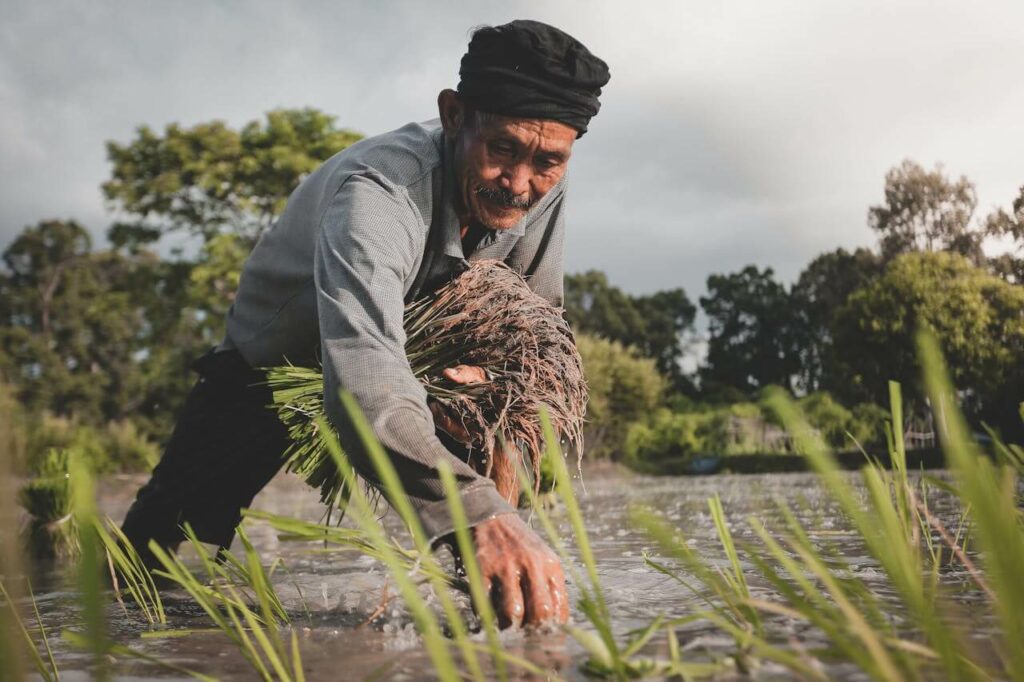
How to be a great guest: your guide to be a responsible and sustainable traveler
A few golden rules for a respectful stay
Alright, let’s dive into Thailand’s community-based tourism (CBT) like a pro—no guidebook needed 🌿. CBT here isn’t just about ticking boxes; it’s about sharing moments, like helping harvest rice or sipping Thai tea with a hill-tribe family. Ready to blend in? Let’s go!
- Ask before you snap: A quick “Can I?” before photos? Huge respect points. Locals will likely say yes—especially if you share the pics later!
- Dress modestly: Temples demand sleeves and knee-length attire. Pro tip: Pack a quick-dry sarong—it doubles as a beach cover-up and cultural lifesaver.
- Speak the vibe: Basics like “Sawasdee” (hello) or “Khob Khun” (thank you) open doors in places like Mae Hong Son’s Karen villages. Even a butchered phrase? Magic ✨.
- Buy local, pay fair: Splurge on handmade batik from Baan Talae Nok or bamboo flutes from Akha communities. No haggling—fair prices keep traditions alive.
- Trash talk? Keep it minimal: Ditch single-use plastic. Slap a branded water bottle in your bag—villages like Koh Yao Noi will thank you for lighter landfills.
- Embrace the unknown: Try that fermented fish dish in Nong San. Assist with indigo dyeing. This is expérience authentique—not a theme park.
Navigating the challenges (and loving it)
Let’s get real: CBT isn’t for luxury seekers. You’ll face cold showers, Wi-Fi that ghosts you, and moustiques that treat your ankles like a buffet 🦟️. But here’s the twist: these quirks make the story. Think of it as a délicat équilibre—tradition vs. modernity, simplicity vs. comfort.
Big picture? Only 45% of villages have reliable transport, and 30% enjoy fast internet, per Allied Market Research. So yes, that songthaew might be late. But here’s the payoff: while waiting, you’ll bond with elders over betel nut chewing or learn that Mae Kampong’s organic farms thrive without fancy tech. No Wi-Fi? Swap scrolling for stargazing with a Karen family. That’s the délicat équilibre—and trust us, it’s worth the splurge 💫.
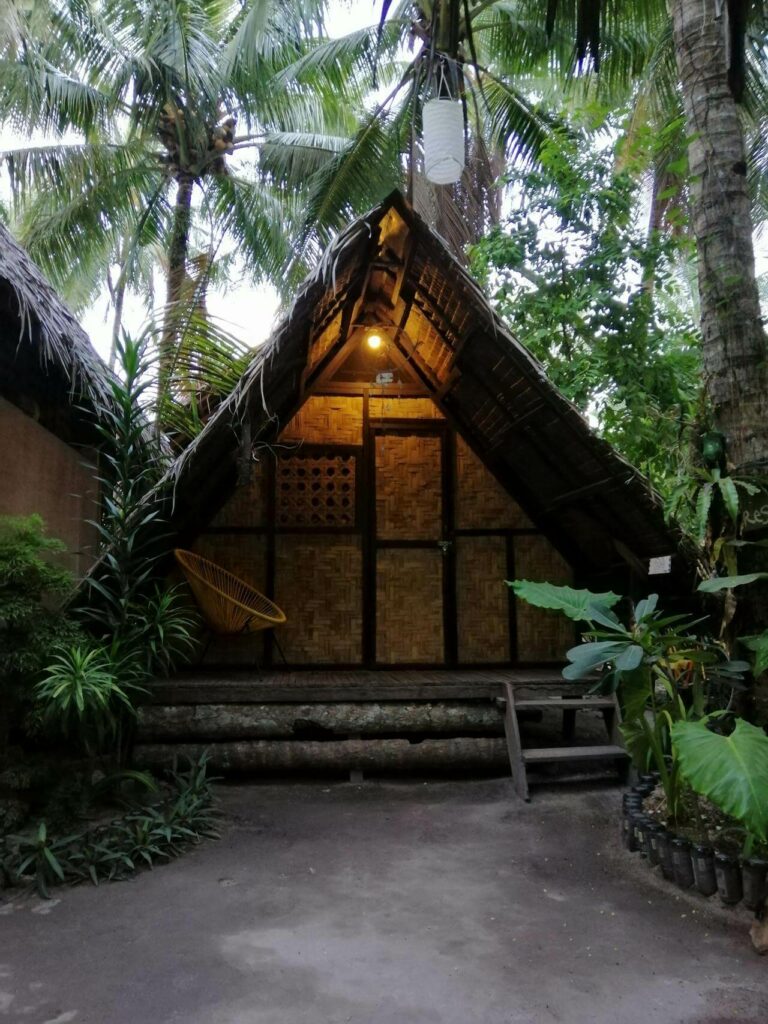
Ready to book? Here’s how to get started
Finding and booking your cbt adventure
Ready to dive into community tourism Thailand? Start with platforms like Local Alike—a social enterprise linking travelers directly with villages. Pick from group tours (just pick a date) or private experiences (click their booking button!). Can’t decide? Chat with their team—they’ve got your back. Pro tip: Check cancellation policies early (100% refund if you cancel 7 days out!).
Don’t sleep on TEATA’s (Thai Ecotourism and Adventure Travel Association) curated packages. Their “CNT Packages Catalog” includes stays with Karen hill tribes or eco-tours in Khlong Toei slums. Bonus: Many trips include guides, meals, and even travel insurance. Just pack light, skip valuables, and wear comfy kicks—this is adventure time.
The future of travel in thailand is local
Post-pandemic, travelers crave deeper connections. Enter CBT: PNUD (Programme des Nations Unies pour le développement) backs projects like Phetchaburi’s mangrove dessert studio, where women-run businesses blend culture and conservation. UNDP’s playbook shows how villages like Koh Phai reinvest profits into schools and reef restoration—no middlemen, just pure community power.
This isn’t just a trip—it’s a movement. By choosing CBT, you’re voting for carbon-neutral tourism, circular economies, and stories that stick. Ready to swap resorts for riverside home-stays or jungle treks with Black Lahu guides? So, are you ready to travel with purpose? 😊
So, community tourism Thailand isn’t just a trip—it’s a chance to connect, contribute, and leave a positive footprint. With pioneers like Local Alike and support from the UNDP, this movement is reshaping travel. Ready to swap crowded spots for authentic adventures? 🌿 Your next journey could empower communities and your soul. Let’s go!
Q / A About Thailand Community-Based Tourism
What’s the big deal with Thailand community-based tourism? Why’s everyone talking about it? 🤔
Alright, let’s break it down! Community-based tourism (CBT) in Thailand isn’t just a gimmick—it’s a game-changer. Think of it as tourism where locals are the real bosses, calling the shots and keeping the cash in the community. 💡 Unlike the typical resort trap, CBT lets you live the local vibe: stay with families, learn ancient crafts, or help plant rice. It’s about sharing stories, not just selfies! The cool part? It started in the 90s and is now a $29.6B industry—expected to hit $140.3B by 2034. Big numbers, bigger impact! 💰
How does CBT actually help local communities? 🙌
Oh, let me count the ways! First, your cash doesn’t vanish into some hotel tycoon’s pocket—it stays right there, funding schools, clinics, and even tree-planting projects. 🌳 Imagine your trip funding a kid’s textbooks! Second, it’s a love letter to tradition: villages keep their crafts alive (like Nong San’s indigo dye magic) instead of ditching them for fast fashion. Third? Eco-love! Places like Baan Talae Nok protect mangroves by showing tourists how cool they are. And finally, it’s job-creating wizardry—less urban exodus, more local pride. Win-win-win! 🎉
Wait, can I actually find CBT spots near popular places like Phuket or Chiang Mai? 🧭
Oh, 100%! Chiang Mai’s Mae Kampong? Total gem—think mountain hikes, homestays, and coffee so good it’ll ruin regular brew for you. ☕ Phuket’s Bang Rong? Yep, it’s a quiet eco-oasis with pineapple farms and kayak adventures through mangroves. Even Bangkok’s got hidden gems like floating markets where your baht directly supports farmers. No need to trek to BFE—CBT’s popping up everywhere! 🌿
Is CBT just for hippie travelers or can families do it too? 👨👩👧
Short answer: Families are welcome! Long answer: Bang Rong’s kayak trips and pineapple picking? Gold for kids. Chiang Mai’s cooking classes and elephant-friendly farms? Educational and fun. The vibe’s chill—no hostel dorm chaos. Just make sure to pick spots that mention “family-friendly” in the description (most CBT sites do). Pro tip: Ask if they’ve hosted kids before—it’s not one-size-fits-all. 🧒
What if I mess up cultural stuff? Any CBT faux pas to avoid? 😬
Don’t sweat it, but listen up! First rule: dress modestly in villages—cover shoulders/knees, especially in temples. Second: ask before snapping pics of people. A quick “Sawasdee?” and a smile work wonders. Third: haggling? Cool at markets, not cool when buying handicrafts from artisans—those tiny hands made that bracelet, y’know. Fourth: ditch the plastic! Remote spots hate trash. Lastly, embrace the “slow down” vibe—no rushing locals. They’ll appreciate your effort, and honestly? That’s half the adventure. 🙏
